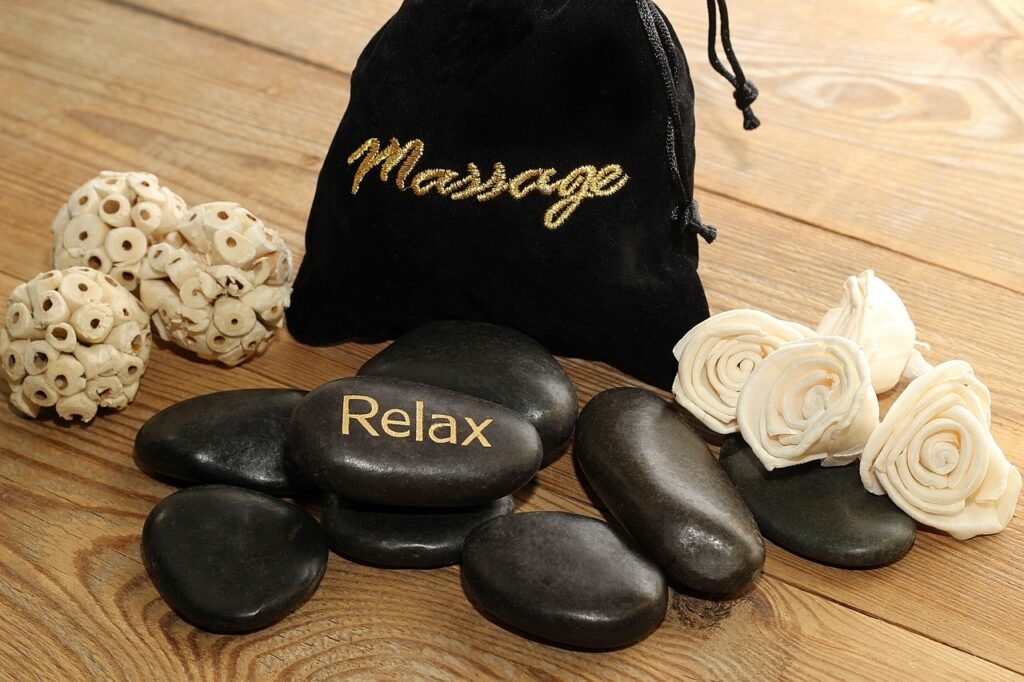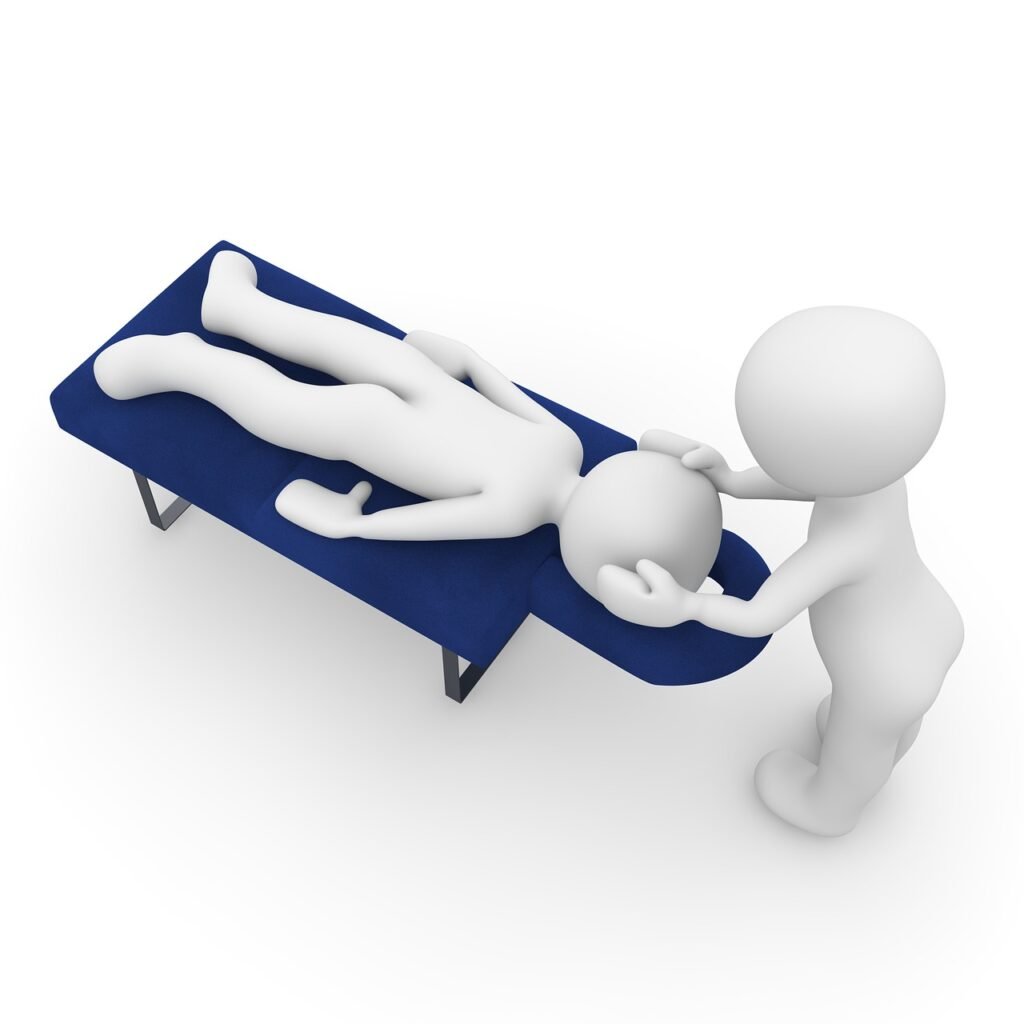Have you ever wondered how self-massage can help you relax? In this article, we will explore the role that self-massage plays in promoting physical relaxation. Massage therapy has long been recognized as a powerful tool for relaxation, but what about when you do it yourself? From relieving muscle tension to reducing stress, self-massage offers numerous benefits for both your body and mind. So, whether you’re looking to unwind after a long day or simply want to take better care of yourself, self-massage might just be the key to achieving the ultimate state of physical relaxation.

Benefits of Self-massage
Self-massage is a wonderful way to promote physical relaxation and provide numerous benefits for your body. By taking the time to massage yourself, you can experience relief from muscle tension, improved blood circulation, a reduction in stress levels, and enhanced flexibility and range of motion.
Relief from muscle tension
One of the primary benefits of self-massage is the relief it provides from muscle tension. Whether you spend long hours sitting at a desk or engage in physically demanding activities, your muscles can become tense and tight. By using self-massage techniques, you can target specific areas of tension and release the built-up pressure. The gentle strokes and manipulation of the muscles help to alleviate discomfort and promote relaxation.
Improved blood circulation
Self-massage also contributes to improved blood circulation throughout your body. As you massage your muscles, you stimulate the blood vessels, allowing oxygen and vital nutrients to reach the tissues more efficiently. This increased blood flow not only promotes healing and recovery but also helps to flush out toxins and waste products from your system. Improved circulation can leave you feeling rejuvenated and revitalized.
Reduction in stress levels
Engaging in self-massage can greatly reduce stress levels. When you experience stress, your body responds by tensing up, which can lead to muscle pain and discomfort. By taking the time to massage yourself, you activate the relaxation response, which calms your mind and body. The soothing motions of self-massage release endorphins, which are natural mood boosters, and help to alleviate anxiety and tension.
Enhanced flexibility and range of motion
Regular self-massage can contribute to enhanced flexibility and improved range of motion in your joints. As you massage your muscles, you help to break up adhesions and scar tissue, which can limit your mobility. Additionally, self-massage increases the elasticity of your muscles and connective tissues, allowing them to stretch and move more freely. By incorporating self-massage into your routine, you can enjoy greater flexibility and ease of movement in your daily activities.
Techniques for Self-massage
There are various techniques you can use for self-massage, each with its unique benefits and applications. Whether you prefer gentle strokes or deeper manipulation, there is a technique that can cater to your needs.
Effleurage
Effleurage is a technique that involves long, sweeping strokes with your hands or fingers. This technique is perfect for warming up the muscles before deeper massage, as it helps to increase blood flow and relaxation. By using effleurage, you can gently stimulate the surface of your skin and prepare your muscles for more targeted techniques.
Kneading
Kneading is a technique that involves squeezing and rolling your muscles between your fingers and palms. This technique can be used to target specific areas of tension and release tight knots or adhesions. Kneading helps to increase circulation, break up scar tissue, and promote muscle elasticity. It is particularly useful for relieving muscle soreness and improving flexibility.
Friction
Friction is a technique that involves using circular movements and deep pressure to work on deeper layers of muscle tissue. This technique helps to break up adhesions and scar tissue, as well as release trigger points. By applying friction, you can loosen tight muscles, increase blood flow, and promote healing. It is important to use caution and adjust the pressure according to your comfort level.
Percussion
Percussion techniques involve using rapid, rhythmic movements such as tapping or cupping to stimulate your muscles. These techniques can help to increase blood flow, improve flexibility, and awaken your body. Percussion can be invigorating and energizing, making it a great option for a pre-workout warm-up or to overcome fatigue.
Stretching
Stretching is a technique that involves elongating your muscles to increase flexibility and range of motion. By incorporating stretching into your self-massage routine, you can lengthen tight muscles, improve muscle balance, and prevent injuries. Stretching should always be done with care, paying attention to your body’s limitations and avoiding pain.

Preparation for Self-massage
Before you begin your self-massage session, there are a few steps you can take to create a relaxing and effective environment.
Create a relaxing environment
Find a quiet and comfortable space where you can focus on your self-massage practice without distractions. Dim the lights, play soothing music, and create a calm ambiance. Consider using aromatherapy diffusers or scented candles to further enhance the atmosphere. Creating a serene environment will help you relax and fully benefit from your self-massage session.
Warm up the muscles
Before you begin massaging specific body parts, it is essential to warm up the muscles. You can achieve this by applying gentle heat to the area, such as using a warm towel or taking a warm shower or bath. The heat helps to increase blood flow and relax the muscles, making them more receptive to massage techniques. Remember to avoid applying heat directly to an inflamed or injured area.
Choose appropriate massage tools or oils
To enhance your self-massage experience, you may choose to use massage tools or oils. Massage tools such as foam rollers, massage balls, and handheld massagers can provide targeted pressure and relieve muscle tension. Additionally, using oils or lotions can reduce friction and add a pleasant scent to your massage. Select a tool or oil that suits your preferences and needs, ensuring it is safe for use on your skin.
Self-massage Techniques for Different Body Parts
Different parts of your body may require specific self-massage techniques to address their unique needs. By targeting these areas, you can experience relief from discomfort and tension.
Neck and shoulders
The neck and shoulders are common areas where people experience tension and stiffness. To relieve this discomfort, you can use self-massage techniques such as gentle neck stretches, kneading the trapezius muscles, and applying circular motions to release tension around the shoulders. Pay attention to your body’s response and adjust the pressure accordingly to avoid any pain or discomfort.
Back
The back is another area that often holds tension and tightness. To massage your back, you can use techniques such as effleurage, kneading, and friction. You can use your hands, massage tools, or even a foam roller to target different sections of your back. Remember to maintain proper posture and use slow, deliberate movements to avoid straining your muscles.
Legs and feet
Your legs and feet play an essential role in your daily activities and can benefit greatly from self-massage. Techniques such as kneading the calves, using a massage ball on the soles of your feet, and stretching the hamstrings can provide relief from muscle tightness and improve circulation. If you spend long hours on your feet or participate in physical activities, regular self-massage can alleviate fatigue and discomfort.
Arms and hands
The arms and hands are often overlooked when it comes to self-massage, but they can greatly benefit from some attention. By massaging your forearms, wrists, and palms, you can relieve tension, promote flexibility, and improve mobility. Techniques such as kneading, self-acupressure, and stretching can be effective in targeting these areas. This is especially beneficial if you spend long hours typing or performing repetitive tasks with your hands.

Self-massage for Headaches and Migraines
Headaches and migraines can be debilitating, affecting your ability to focus and perform daily tasks. Self-massage techniques can help alleviate the discomfort and provide relief.
Temples and forehead massage
One effective technique for relieving headaches is massaging your temples and forehead. Apply gentle pressure using your fingertips and move your fingers in small circles. This technique helps to relax the facial muscles and increase blood flow to the area, reducing tension and alleviating headaches.
Scalp massage
A scalp massage can also be beneficial for relieving headaches and promoting relaxation. Using your fingertips, massage your scalp in circular motions, focusing on areas where you feel tension or discomfort. This technique stimulates the scalp, increases blood circulation, and can provide immediate relief from headaches.
Self-massage for Relaxation and Sleep
Self-massage can be a valuable tool to promote relaxation and improve the quality of your sleep. By incorporating certain techniques into your routine, you can create a soothing environment and prepare your body for restful sleep.
Full body self-massage
Engaging in a full-body self-massage can be a wonderful way to relax before bedtime. Start with gentle effleurage strokes to warm up your muscles, then proceed to kneading and friction techniques to release tension. Pay special attention to areas that tend to hold stress, such as the neck, shoulders, and lower back. Take your time and adjust the pressure to your comfort level, allowing your body to unwind and preparing it for a peaceful sleep.
Foot reflexology
Applying pressure to specific points on your feet can have a calming effect and promote relaxation. Foot reflexology is based on the belief that certain areas of the feet correspond to specific organs and systems of the body. By massaging and applying pressure to these reflex points, you can stimulate relaxation and ease tension throughout your body. Focus on the soles of your feet, using your thumbs or a massage ball to apply firm but comfortable pressure.
Self-massage as a Stress Management Tool
In addition to promoting physical relaxation, self-massage serves as an effective tool for managing stress. By incorporating self-massage into your daily routine, you can activate the body’s natural relaxation response and reduce the negative effects of stress.
Release of endorphins
During self-massage, the body releases endorphins, which are natural mood-enhancing chemicals. These endorphins not only provide a sense of well-being but also act as natural painkillers and stress relievers. By engaging in self-massage, you can boost your mood and counteract the effects of stress, enhancing your overall well-being.
Activation of the parasympathetic nervous system
Self-massage activates the parasympathetic nervous system, which is responsible for the body’s rest-and-digest response. By stimulating this system, self-massage helps to slow down heart rate, lower blood pressure, and decrease cortisol levels. The parasympathetic response promotes a state of relaxation, allowing you to combat stress and find a sense of calm.
Self-massage as a Post-Workout Recovery Method
After a strenuous workout, self-massage can aid in the recovery process and help your muscles heal more effectively. By targeting specific areas and utilizing certain techniques, you can maximize the benefits of self-massage for post-workout recovery.
Lactic acid removal
Intense exercise can lead to the accumulation of lactic acid in the muscles, causing soreness and discomfort. Self-massage techniques such as kneading and friction help to disperse the lactic acid buildup and promote the removal of waste products from your muscles. This aids in reducing muscle soreness and speeding up the recovery process.
Muscle repair and regeneration
Engaging in self-massage after a workout helps to stimulate blood flow to your muscles, delivering essential nutrients and oxygen. This increased circulation promotes muscle repair and regeneration, allowing your muscles to recover more quickly and effectively. By incorporating self-massage into your post-workout routine, you can enhance your body’s ability to bounce back from intense physical activity.
Self-massage for Pain Relief
Self-massage can be an effective method for relieving various types of pain, whether it is muscular discomfort or joint stiffness. By targeting specific areas and using appropriate techniques, you can alleviate pain and enhance your overall well-being.
Trigger point massage
Trigger points are specific areas of muscle tightness that can cause referred pain in other parts of the body. Engaging in trigger point massage can help to deactivate these points and relieve pain. By using deep pressure and sustained strokes, you can release tension and restore proper muscle function. It is important to identify the location of the trigger point accurately and apply pressure gradually to avoid any discomfort or injury.
Joint mobility techniques
If you experience joint stiffness or limited range of motion, self-massage can help increase joint mobility and alleviate discomfort. By using techniques such as gentle stretching, circular movements, and friction, you can reduce tension around the joints and improve their flexibility. It is important to perform these techniques with care and pay attention to your body’s response, stopping if you feel any pain or discomfort.
Guidelines for Self-massage
While self-massage can be a beneficial practice, it is essential to follow certain guidelines to ensure your safety and well-being.
Listen to your body
During self-massage, it is crucial to listen to your body and pay attention to any warning signs. If you experience pain or discomfort, adjust the pressure or technique accordingly. Avoid applying excessive force or overworking your muscles, as this can lead to injury. If you have any existing medical conditions or injuries, consult with a healthcare professional before engaging in self-massage.
Massage duration and frequency
The duration and frequency of self-massage sessions depend on your individual needs and preferences. Start with shorter sessions and gradually increase the duration as you become more comfortable. Aim for at least 10-15 minutes of self-massage per session to allow sufficient time for muscle relaxation and therapeutic benefits. As for the frequency, you can engage in self-massage daily or as needed, depending on your specific goals and availability.
Seek professional assistance if necessary
While self-massage can provide many benefits, it is important to recognize when professional assistance is necessary. If you are experiencing severe or chronic pain, have a specific injury, or are unsure about the appropriate techniques, it is advisable to consult with a qualified massage therapist or healthcare professional. They can assess your condition and provide personalized guidance and treatment options.
In conclusion, self-massage plays a vital role in promoting physical relaxation by offering relief from muscle tension, improving blood circulation, reducing stress levels, and enhancing flexibility and range of motion. By exploring various techniques and paying attention to different body parts, you can target specific needs and achieve overall well-being. Whether you are seeking relaxation, pain relief, stress management, or post-workout recovery, self-massage proves to be an effective and accessible practice. Remember to create a calming environment, warm up your muscles, and choose suitable tools or oils. Follow the guidelines, listen to your body, and seek professional assistance when needed. Embrace the art of self-massage and unlock the power of relaxation within yourself.
